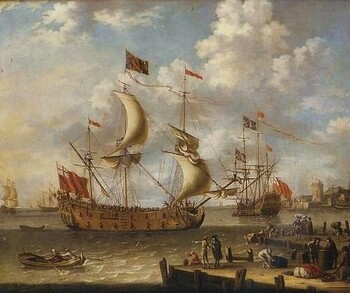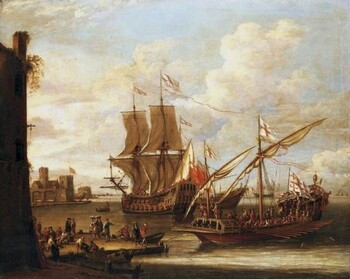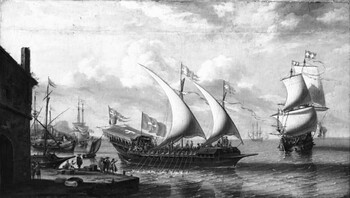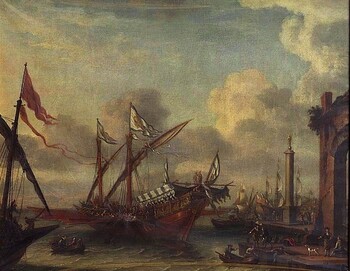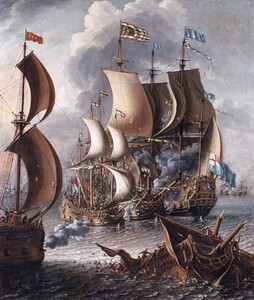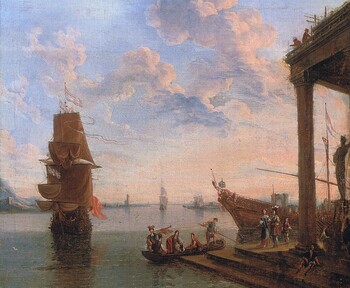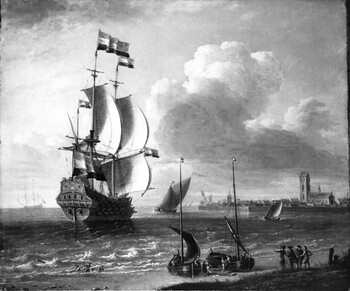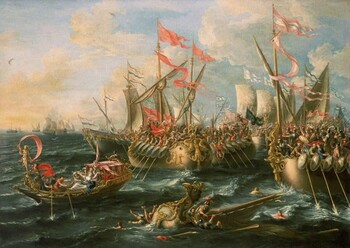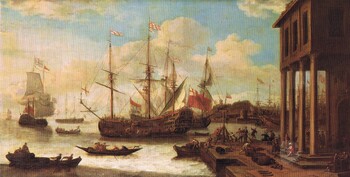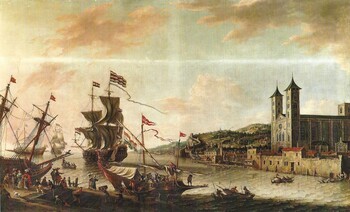Laureys A. Castro
A Dutch East India man off Hoorn
Oil on canvas : 63,5 X 76,5 cm
Signed
London, Dulwich Picture Gallery
(black and white photograph)
This is a comparative item
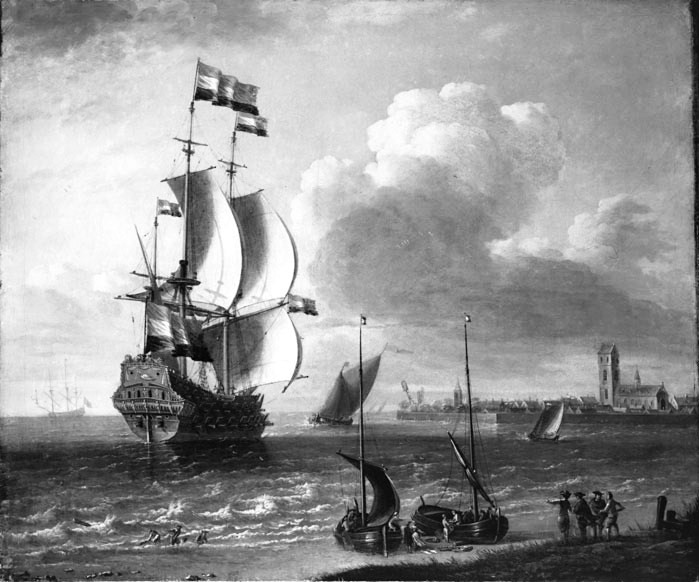
Painting for Sale
Castro, Laureys A.
"Two warships, a Maltese galley and an English Man-o-War"
Comparative paintings
Click photos for more details

